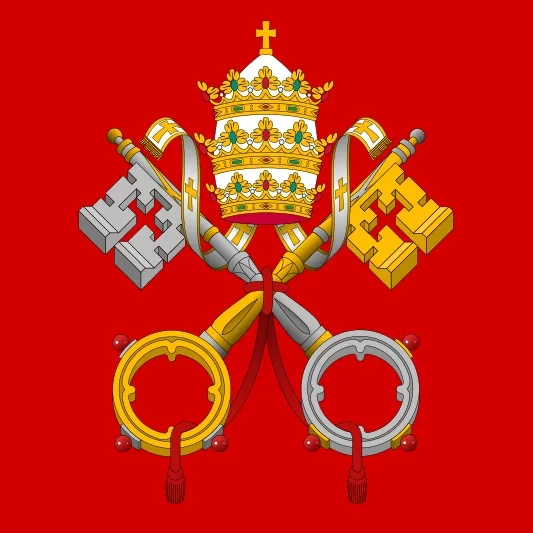Smoke increases after Israeli airstrikes on the city of Rafah in the southern Gaza Strip, Oct. 10, 2023. / Credit: Anas-Mohammed/Shutterstock
ACI Prensa Staff, Oct 17, 2023 / 18:10 pm (CNA).
The ongoing tension in the Middle East region has flared up again in a war between Israel and Hamas, the Palestinian terrorist group that controls the Gaza Strip.
This new round of clashes has caused international concern and has left many wondering about the causes, consequences, and background of this conflict. Here’s what you need to know about the war between Israel and Hamas.
Origins of the conflict
The history of the conflict between Israel and Palestinian groups, including Hamas, dates back decades, mainly to the creation of the State of Israel in 1948. One of the main issues in dispute is the status of Jerusalem, a holy city for Jews, Muslims, and Christians. Israel’s occupation of the West Bank and Gaza since the Six-Day War in 1967 has also been a constant point of friction.
Hamas, a Palestinian Islamic organization, emerged in 1987 as a resistance group in the West Bank and Gaza. Over the years, it has been in conflict with Israel, which considers Hamas a terrorist organization. The lack of a sustainable peace agreement between Israelis and Palestinians has contributed to the perpetuation of violence in the region.
Immediate causes of war in 2023
On Oct. 7, Hamas began an invasion of Israel and killed more than 1,000 Israelis, the vast majority of them civilians. Following the initial raid, reports emerged that the Islamic extremist group had kidnapped civilians, including the elderly, women, and minors.
The Israel Defense Forces (IDF) said nearly 300 people were killed at an open-air music festival at the start of the raid.
Hamas said its attack was retaliation for the eviction at the Al-Aqsa Mosque in occupied East Jerusalem in April and for increasing Israeli violence against Palestinians.
In response to the attack, Israel declared a state of war and counterattacked the terrorist group in the Gaza Strip with a large-scale military mobilization, deploying troops and launching missile strikes against Hamas targets.
The Israeli military also announced on Oct. 9 that it would impose a complete blockade on the Gaza Strip. The U.N. Agency for Palestinian Refugees (UNRWA) warned last Saturday that more than 2 million people are about to run out of water in the region. Since Oct. 11, Gaza also has had no electricity and humanitarian aid has not been allowed in.
Israeli Prime Minister Benjamin Netanyahu has indicated that he will seek to eradicate Hamas from the region. “We are fighting with all our strength on all fronts. We have gone on the offensive. Any member of Hamas is a dead man,” he said Oct. 11.
Since the start of the war, Hamas has continued to launch thousands of rockets against Israel’s main cities, Jerusalem and Tel Aviv. Israeli forces have positioned themselves along the border and have called on Palestinians to evacuate northern Gaza in anticipation of an imminent invasion by air, sea, and land.
Lynn Hastings, humanitarian aid coordinator for the United Nations, said on Sunday that Gaza is currently experiencing an unprecedented “inhumane” situation following the Israeli bombing and the siege.
“There are no precedents. Anyone who has followed this occupation and conflict for so many decades will see this as a humanitarian catastrophe of unprecedented scale. As I said, the events of Oct. 7 and the Hamas attacks were absolutely abhorrent. But this attack on Gaza is catastrophic and unprecedented,” she said Oct. 15.
Number of deaths, injuries increasing at alarming rate
Since the beginning of the conflict, approximately 1,300 Israeli citizens have been reported dead, and more than 3,200 have been injured.
The Palestinian Ministry of Health, for its part, has indicated that as of Monday, Oct. 16, there are a total of 2,808 Palestinians dead and 10,859 injured in the Gaza Strip.
More than 1 million people, equivalent to almost half of Gaza’s total population, have been forced to leave their homes. According to UNRWA, some 500,000 Palestinians have sought refuge in its facilities, and they can no longer cope.
The U.N. reported Oct. 16 that “the death toll is rising” and that “there aren’t enough body bags in Gaza.”
Catholic Church’s position regarding the war
Cardinal Pietro Parolin, Vatican secretary of state, condemned Hamas’ terrorist attacks against Israel, called for peace in the Holy Land, and said that he is “ready for any necessary mediation.”
The cardinal told Vatican News on Oct. 13 that the Hamas attacks were “inhumane” and that the Holy See expressed “complete and firm condemnation.”
Pope Francis has also condemned the war, has shown his closeness to the victims “who are experiencing hours of terror and anguish,” and has called for the end of the fighting in the Holy Land.
“Please stop the attacks and weapons, and understand that terrorism and war do not bring any solution, but only death and suffering for many innocent people,” the pope said Oct. 8, pointing out that “war is a failure: every war is a failure” and urging prayer “for peace in Israel and Palestine.”
Cardinal Pierbattista Pizzaballa, the Latin patriarch of Jerusalem, on behalf of all the Catholic ordinaries of the Holy Land, called for a day of prayer, fasting, and abstinence for peace on Oct. 17.
On Oct. 16, the cardinal offered to be exchanged for the children held hostage by Hamas in the Gaza Strip.
Christians in Gaza take refuge inside parish
Parolin also said during a recent interview that he feels special concern for Christians in Israel and Palestine, noting that many of the faithful of the small Catholic community in Gaza have taken refuge in the only Catholic church in the enclave, Holy Family Parish.
So far in the Christian community — a minority of about 1,000 people — no deaths or injuries have been reported.
“It’s true that the Catholic community in Gaza, about 150 families, is suffering immensely,” the cardinal said.
The only Catholic priest in Gaza, the Argentine Father Gabriel Romanelli, said on social media Oct. 16: “Our small flock of Christians are at the parish because they say they feel the protection of Jesus there. They don’t know where to flee, because there’s no safe place to go, they tell us. The danger of death is real throughout the Gaza Strip today.”
Parolin added that “Christians are an essential part of the land where Jesus was born, lived, died, and rose again.”
“No one can imagine Palestine or Israel without a Christian presence,” he said, “which has been there from the beginning and will be there forever.”
This story was first published by ACI Prensa, CNA’s Spanish-language news partner. It has been translated and adapted by CNA.










